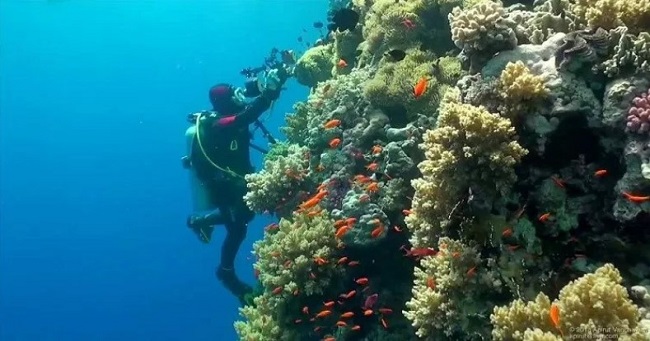


Goes without saying that the turbulent political condition in the region has not really worked wonders for the Middle East, and the fallout has impacted Egypt too! From a tourism standpoint, Egypt has since a steady depreciation in the yearly footfall to the land for the purpose of tourism. The sands and the pyramids and the sphinx have been a major attraction across the globe and is no hidden wonder. The real hidden gem in the mix however is below the seal level and not above it! Behold the sharks of the red seas, the underwater Sherpas, who, if not careful are not shy to show you their appetite as well!
All jokes aside, the Red Seas are not something that you usually think of when you think of touring Egypt, but if you continue clinging onto that notion after this article, then the joke is on you. The Red Seas are also known for a rich aquatic flora and fauna and are committed to tourist exploration via scuba diving and the likes. There are diving centers across the coastline, in Sharm el Sheikh and also in the Sinai Peninsula. Truth be told, the SS Thistlegorm shipwreck is also a major tourist attraction and generates a sizeable revenue for Egyptian minister of tourism Yehia Rashid and his department.

Image Source: www.deepmedia.com
The dive-centers at the Red Seas are about five hours away from the populated areas and are usually run by European franchises. They are responsible for meditative spots in the warm-waters, diving centers, coral observation sessions among other attractions. The destinations see more visits from solo travelers than bandied groups of tourist families, which serves well if peace of mind from isolation is what you seek from these vacations.
International conflict notwithstanding and hoping that sudden inflation in the bandwagon should not harm the ecosystem inversely, the public interest in the treasures that the Red Sea and its environ is, will be valued many times over.
Image Source: www.ytimg.com
Perhaps it serves the fauna well to not have so many spectators as then the need to exploit them should also arrive, and the increasing footfall may harm the flora as well. Shark-hunting has decreased the number of sharks greatly and the oceanic predator is no longer in an apex position. Quick glimpses of white-tipped pectoral fins, gliding smoothly above water as the boat floats still on the warm-water, is common. Most of these sharks are about 2 odd meters in length and do not usually interact unless otherwise messed with. There are shoals of exotic sea-fish as well that are intrigued by the sudden appearance of a mass floating on the water and usually swim around it and past it in hopes of finding food. If you are lucky, your lens might catch them in action as well.
Image Source: www.pinimg.com
The sharks are not really scared of the human population and are often seen meandering into populated areas. Most of the white-tipped are there in search of food or the odd unsuspecting fish, they steer clear of the man on the land. However, shark attack instances are far and few and only occur in the deep-seas where a group of stranded tourists occasionally run afoul of a shoal of hammerheads! The majestic aesthetic appeal in these sea-creatures only serves to boost one’s fondness for the marvelous diversity that our ecosystem is. Silent contemplation and mediation come to mind as the core activities to follow up the days with, once the coral reefs are all explored and the fuel in the boat is nearing emptiness. The sunset over the Red Seas is a thing to marvel at. Ask the foam settling on the horizon in the heels of the sun, what the silent, sentient, deadly fins cutting across water in the distance are talking about.
Image Source: www.walldevil.com